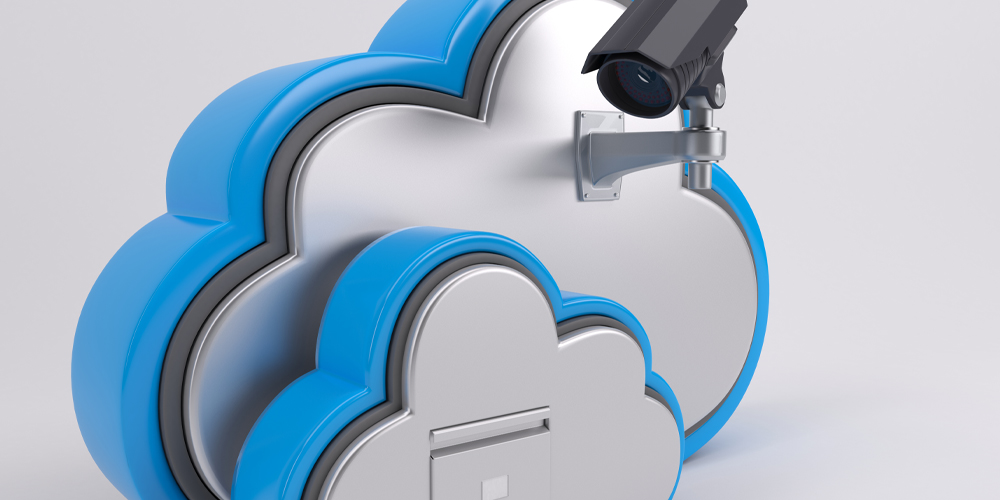As more businesses and individuals move their data to the cloud, securing sensitive information has become a critical concern. Cloud computing offers flexibility, scalability, and cost savings, but it also introduces new security risks. In this article, we will explore the importance of cloud security, the common threats to cloud data, and practical strategies to protect your data in the cloud.
Understanding Cloud Security
Cloud security refers to the policies, technologies, and practices designed to safeguard data, applications, and services stored in the cloud. Cloud computing relies on remote servers and virtualized resources, which makes it susceptible to cyberattacks, data breaches, and unauthorized access. Ensuring the security of cloud-based data is essential to prevent data loss, leakage, and misuse.
Cloud providers typically implement strong security measures, but responsibility for data security is shared between the provider and the user. As an organization or individual using the cloud, it’s essential to take steps to protect your data in addition to relying on the cloud provider’s security features.
Common Cloud Security Threats
Understanding the various risks to cloud data is the first step in protecting it. Here are some of the most common threats to cloud security:
1. Data Breaches
Data breaches occur when unauthorized individuals gain access to sensitive data. This could be through hacking, weak authentication practices, or misconfigured cloud settings. Once data is breached, it can be exposed, stolen, or used maliciously.
Breaches can be particularly damaging in the cloud because data is often stored in a shared infrastructure, meaning a breach in one part of the cloud could potentially compromise multiple users or organizations. Encrypting data and using multi-factor authentication can significantly reduce the risk of a data breach.

2. Insecure APIs
Many cloud services rely on application programming interfaces (APIs) to connect users to their data. While APIs are essential for enabling cloud interoperability, insecure APIs can expose vulnerabilities. Attackers can exploit poorly designed APIs to gain unauthorized access to data or inject malicious code into cloud-based applications.
To mitigate this risk, organizations must ensure that APIs are properly secured with encryption, access controls, and regular security testing.
3. Account Hijacking
Account hijacking occurs when attackers gain access to user accounts by stealing login credentials, typically through phishing or weak password practices. Once an attacker gains control of an account, they can manipulate or steal data, impersonate users, or carry out malicious activities.
Implementing strong password policies, using multi-factor authentication (MFA), and educating users about phishing attacks can help prevent account hijacking.
4. Data Loss
Data loss can occur if cloud storage fails or if a user accidentally deletes data. Without proper backup systems, data loss can be devastating. While many cloud providers offer redundancy and backup services, users are still responsible for ensuring their data is securely backed up and recoverable in the event of an emergency.
Regular data backups, along with clear disaster recovery plans, are key to avoiding permanent data loss in the cloud.
5. Insider Threats
Insider threats are one of the most difficult risks to prevent. These threats come from individuals within an organization, such as employees or contractors, who misuse their access to cloud systems to steal data, compromise security, or perform malicious actions. Insider threats can be intentional or accidental, but the damage can be severe in either case.
To mitigate insider threats, organizations should enforce strict access controls, conduct regular audits, and monitor user activity. Employee training on security best practices is also essential to reducing the likelihood of accidental data exposure.
Best Practices for Cloud Data Security
To protect your data in the cloud, there are several best practices and security measures you can implement. Below are some of the most effective strategies for securing cloud-based data:
1. Use Strong Authentication Methods
One of the most effective ways to secure your cloud data is by implementing strong authentication methods. Passwords alone are often not sufficient to prevent unauthorized access. Multi-factor authentication (MFA) adds an extra layer of security by requiring users to provide additional verification, such as a fingerprint, security token, or a one-time code sent to a mobile device.
Enforcing MFA across all cloud accounts, especially for administrative access, can dramatically reduce the likelihood of account hijacking.
2. Encrypt Your Data
Encryption is one of the most powerful tools for protecting cloud data. By encrypting data both at rest (stored data) and in transit (data being transferred), you can ensure that even if someone gains unauthorized access, the data remains unreadable without the proper decryption keys.
Cloud providers often offer built-in encryption, but it’s important to understand what is covered by the provider and whether additional encryption measures are necessary for your sensitive data.
3. Implement Access Control and Least Privilege
Access control is critical for ensuring that only authorized users can access your cloud data. The principle of least privilege dictates that users should only have access to the data they need to perform their job functions. By restricting access to sensitive information, you reduce the risk of data exposure or misuse.
Ensure that employees and contractors only have the necessary permissions for their roles and that permissions are regularly reviewed to prevent privilege creep.
4. Regularly Backup Data
Regular data backups are essential to preventing data loss. Cloud services are generally reliable, but no system is entirely foolproof. Make sure to back up important data frequently, and store backups in a separate location to avoid losing data due to service outages or breaches.
In addition to routine backups, test your backup and recovery process to ensure that you can quickly restore your data in the event of an incident.

5. Monitor Cloud Activity
Cloud security requires ongoing monitoring. By continuously monitoring cloud activity, you can detect unusual behavior that may indicate a breach or attempted attack. Tools like intrusion detection systems (IDS) and security information and event management (SIEM) systems can help track access logs, monitor for suspicious activity, and generate alerts in real time.
Set up alerts for any unusual access patterns, such as logins from unfamiliar locations or large data transfers, and respond promptly to potential security incidents.
6. Implement Security Policies and User Training
Security is only as strong as the people using it. Implementing comprehensive security policies and providing regular training to employees can significantly reduce the risk of human error, which is often the cause of security incidents. Ensure that all users understand the importance of strong passwords, how to recognize phishing attempts, and how to report suspicious activity.
Regularly update training materials to reflect the latest security threats and best practices, and ensure all users understand their responsibilities in protecting cloud data.
Conclusion: Protecting Your Data in the Cloud
Cloud computing has transformed the way businesses and individuals store and access data, but with its many benefits comes the responsibility of ensuring that data is secure. Understanding the common threats to cloud security and implementing the best practices outlined in this article can help protect your sensitive data from breaches, loss, and unauthorized access.
By using strong authentication, encrypting data, implementing access controls, regularly backing up data, and monitoring activity, you can ensure that your data remains secure while enjoying the benefits of cloud computing. Security is an ongoing process, and staying informed about new threats and best practices will help you maintain a secure cloud environment for years to come.











